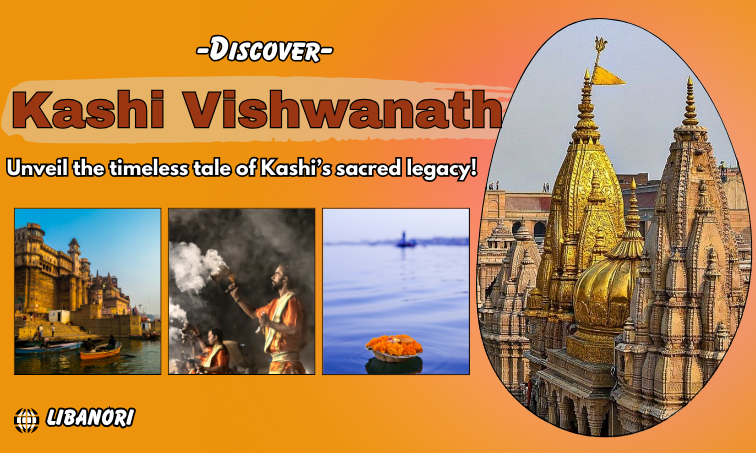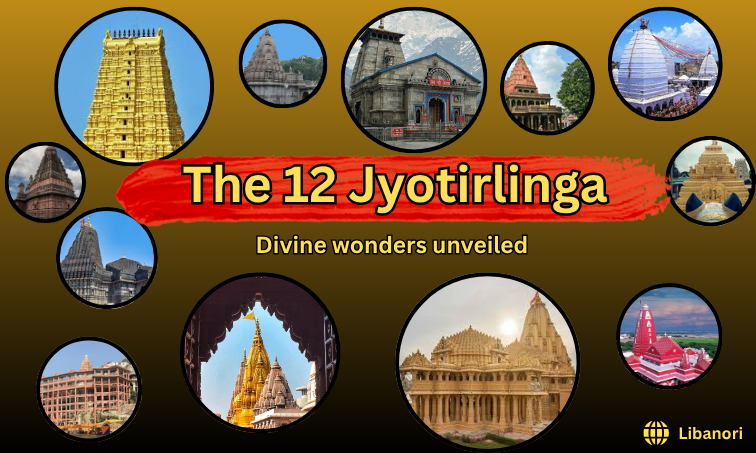Located on the revered banks of the river Ganga River in Varanasi, the Kashi Vishwanath Temple stands as a lighthouse for faith, history and spirituality. For ages, this sacred shrine has been a religious magnet which attracts millions of devotees every year from around the globe. Those who seek Shiva’s blessings or hope for liberation from the cycle of reincarnation flock to the temple complex. They will mesmerize you with its spiritual gusto and lively ambiance. The enchanting experience of the ultimate abode of Shiva will make you feel as though you have teleported into a different realm.
Hop onto this article and discover the divine pulse of Varanasi’s spiritual spirit.
The legacy of Kashi Vishwanath Temple
Pilgrims from every corner of India and elsewhere journey to this holy destination to entrench themselves in the timeless energy of the city where every moment echoes with spirituality and days of yore.The temple’s rituals and chants fill the air with a sense of divine presence and vigour.
Kings, sages and ordinary folks have all contributed to the temple’s magnificence and sustenance of this symbolic site. Maharani Ahilyabai Holkar reconstructed the temple in the 18th century and also ensured that it survives during tumultuous times. MaharajaRanjit Singh donated the iconic golden dome. After invasions and merciless destruction the spirit of Kashi never faded.
Local communities thrive around the temple complex. They keep age-old customs alive by regularly practicing prayers and hosting cultural celebrations.
The History of Kashi Vishwanath
The Kashi temple boasts a history that is layered and vivid, and the city truly celebrates it. Ancient Hindu texts mention the temple, suggesting that the origins date back to thousands of years. As per legend, Lord Shiva himself setted up this Jyotirlinga. Over the period of time the temple has gone through ups and downs but eventually emerged stronger than ever before.
- The shrine’s earliest mention appears in the Skanda Purana.
- The temple suffered significant damage during the era of Qutubuddin Aibak, Sikandar Lodhi as well as Aurangzeb.
- The current structure is believed to date back to 1780. Many contributed in embellishing the temple which uplifted the overall aesthetic of the shrine.
Spiritual Significance and Rituals
For the followers of the Hindu religion, Varanasi is the cosmic center where life, death, and eternity intertwine. It is believed by many that here Lord Shiva blesses souls with liberation (moksha). People often refer to the temple as the “spiritual heart” of India. During the festival of Mahashivratri, the temple comes alive with vibrant celebrations. At the same time, the entire town joins in with fervent prayers and grand processions.
Legends and Myths
Legends steep the temple, adding to the mystique of the place:
- The Jyotirlinga Legend: According to legend, when Brahma and Vishnu disputed about supremacy, Shiva appeared as an endless pillar of light to settle the matter.
- Maa Annapurna’s Blessing: Close to the temple lies the shrine of Maa Annapurna, the deity of nourishment. She promised that no one in Kashi would ever go hungry.
- Manikarnika Ghat Origin: In addition, Vishnu’s earring fell here while performing a penance, which makes the ghat sacred
- Eternal Flame: The sacred flame in the temple, according to legend, has been burning for centuries.
Architectural marvels of the temple
Now that we have unraveled the history and spiritual essence of this holy abode, let’s dive into the jaw-dropping architectural marvels that make this place etched in your memory.
- The temple architecture has Nagara style, which features a soaring spire and intricately carved stone facades.
- The main sanctum comprises the revered Jyotirlinga of Lord Shiva, which is set on a silver altar.
- The complex forms a quadrangle and includes smaller shrines dedicated to deities specifically, Dhandapani, Kaalbhairav, and Vishnu.
- The gold donated by the kings of yesteryear embellishes the shrine and domes of the temple.
- The architecture blends spiritual symbolism with functional design.
Closing thoughts
Planning a visit to the Kashi Vishwanath Temple is not just a religious affair; it is an immersion into the spiritual hotbed of India. This beacon of spirituality draws people from across the globe to experience its scenic Ghats. With its rich history and architectural grandeur, along with radiant rituals, the temple continues to invigorate millions.
Kashi enthusiastically welcomes you with its divine grace. Seek blessings, gain knowledge, and live the timeless traditions of India’s sacred legacy. Kashi extends an experience like no other. Moreover, its narrow lanes, busy markets along with temple sounds paint a vivid image of how the past and present exist simultaneously.
Gather your belongings and get ready for the revered city of Varanasi.
Disclaimer: This blog is intended for informational and general travel guidance purposes only. We aim for accuracy however some details may vary. We recommend confirming the details given above. All opinions expressed do not reflect everyone’s journey. Readers are encouraged to cross-check details with official sources.
Discover another revered Shiva temple, Tungnath
Frequently Asked Questions
A. Its origins date back over a thousand years, with references in ancient Hindu scriptures.
A. It is one of the twelve Jyotirlinga. Devotees believe that visiting one holy site equals seeing all Jyotirlingas
A. As per legend, the temple’s Jnana Vapi (Well of Wisdom) is believed to grant erudition and enlightenment.
A. Yes, the temple complex has gone through multiple reconstructions.
A. Adi Shankaracharya, Swami Vivekananda, and Guru Nanak, just to name a few.
Refresh Date: August 21, 2025



